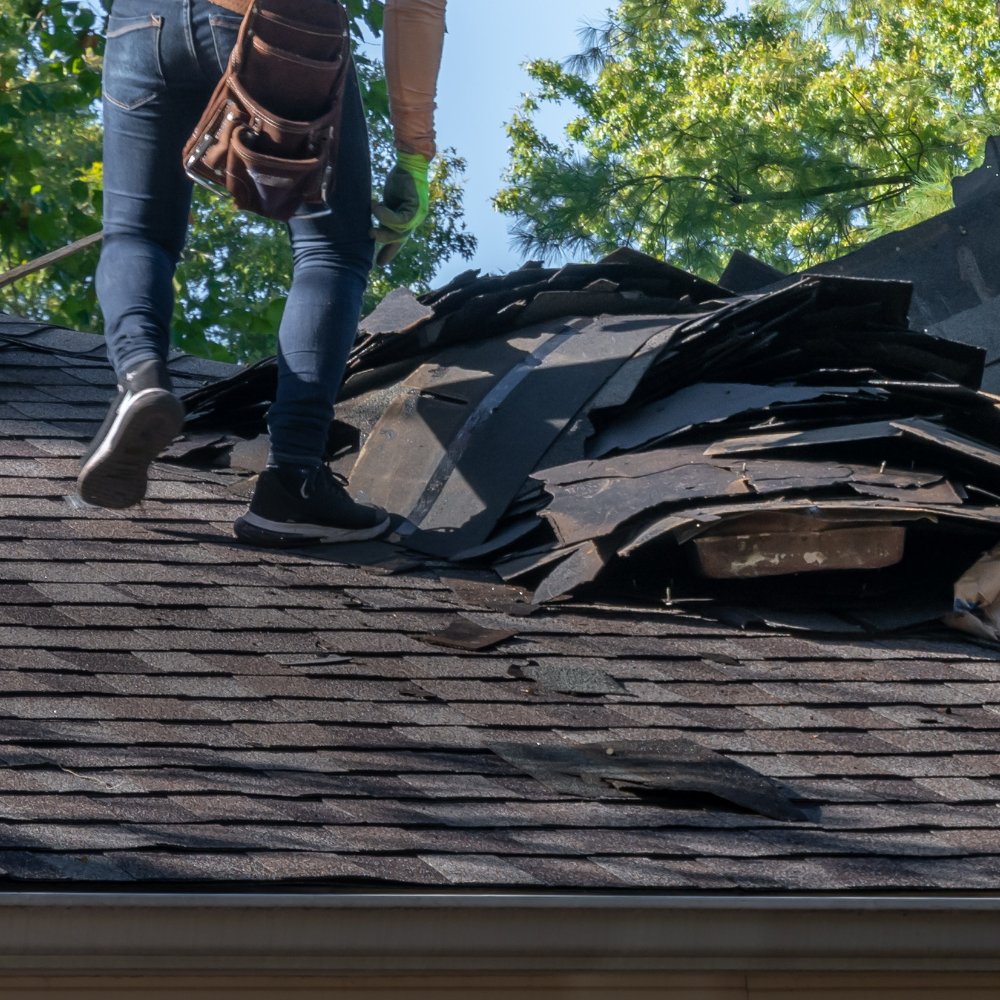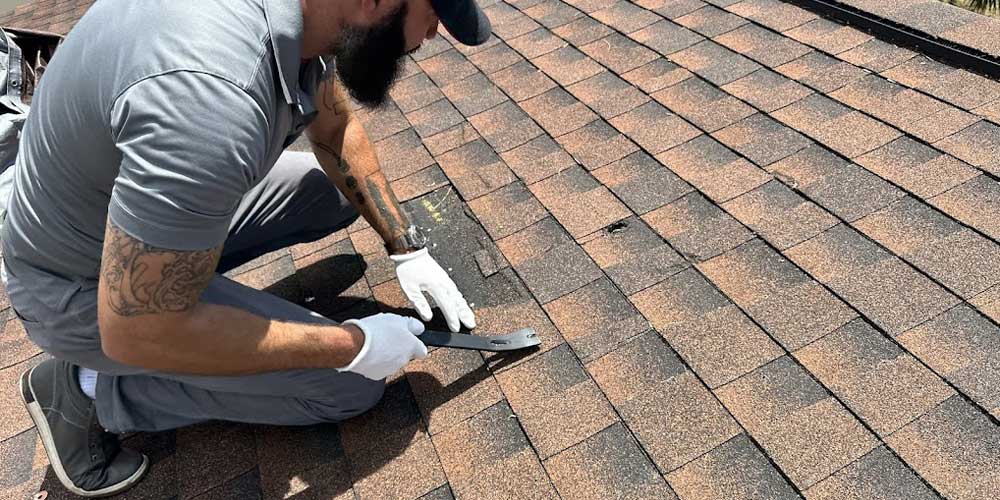Roof Repair Oahu: Expert Roof Fixes for Lasting Defense
Wiki Article
Recognizing the Various Kinds Of Roofs: A Comprehensive Guide for Homeowners
In the realm of homeownership, selecting the appropriate roofing style is a decision that carries significant implications for both functionality and visual allure. With a selection of alternatives-- varying from the typical gable to the modern level-- each type provides distinct advantages and challenges that should straighten with the homeowner's ecological considerations and particular needs. Understanding these differences not just aids in making an educated choice but additionally affects long-lasting maintenance and energy efficiency. As we explore the intricacies of numerous roofing types, it ends up being evident that dimension does not fit all; the best selection might amaze you.Saddleback Roof
Gable roofings, characterized by their triangular form, are amongst the most preferred roofing styles as a result of their simplicity and efficiency in losing water and snow. This style features 2 sloping sides that meet at a ridge, enabling reliable drainage and decreasing the risk of water build-up. The high pitch commonly connected with gable roof coverings enhances their capability to manage hefty precipitation, making them appropriate for numerous environments.Along with their useful advantages, saddleback roofs offer visual convenience. They can be adapted to various architectural styles, from standard to modern-day homes. The layout can also accommodate extra functions such as dormer home windows, which boost all-natural light and air flow in the attic area.
Additionally, saddleback roofs offer sufficient area for insulation, adding to power performance. Property owners can select from a range of roof covering products, including asphalt roof shingles, steel, and floor tiles, better enhancing customization choices.
In spite of their advantages, saddleback roofs may require additional support in locations vulnerable to high winds or hefty snowfall. On the whole, the gable roof covering continues to be a popular option due to its blend of capability, longevity, and aesthetic allure.
Flat Roofs
Flat roofs are often identified for their minimal style and useful applications, particularly in industrial and commercial setups (oahu roofing). These roofings feature a horizontal or virtually horizontal surface, which permits simple construction and functional area usage. While they might do not have the aesthetic allure of angled roofs, flat roofs use various advantages, particularly in urban settings where making the most of room is vitalOne of the key benefits of level roofings is their availability. Property owners can make use of the roofing space for different purposes, such as rooftop yards, terraces, or photovoltaic panel installations. Furthermore, level roofings are generally extra affordable to preserve and mount compared to their sloped counterparts, as they call for fewer materials and labor.
Nonetheless, flat roof coverings do present particular challenges. Appropriate water drainage is necessary to protect against water pooling, which can cause leaks and structural damage. For this reason, choosing premium waterproofing products and regular evaluations are essential for ensuring longevity. Typical materials made use of for flat roofing systems consist of built-up roof covering (BUR), changed bitumen, and single-ply membranes, each offering distinct benefits. In general, flat roofings act as a useful and versatile option for lots of home owners and organizations alike.
Hip Roof Coverings
Hip roof coverings are identified by their sloped sides that merge at the top, forming a ridge. This design is distinct from gable roofs, as all 4 sides of a hip roof covering incline downwards toward the wall surfaces, giving an extra steady structure. The angle of the inclines can vary, enabling versatility in building aesthetics and capability.Among the primary benefits of hip roofings is their capability to withstand hefty winds and negative weather. The sloped surfaces enable much better water drainage, lowering the danger of leakages and water damages. Additionally, hip roof coverings use increased attic room space, which can be utilized for storage space or also exchanged habitable areas.
However, creating a hip roof can be extra complicated and pricey than simpler roof covering types, such as saddleback roofs. The extra product and labor included in developing the slopes and making sure proper architectural honesty can result in greater expenses. roof repair oahu In spite of these downsides, many home owners favor hip roofings for their durability, visual allure, and potential for energy performance.
Mansard Roofs
Mansard roofing systems, usually recognized by their special four-sided layout, feature two slopes on each side, with the reduced incline being steeper than the upper. This architectural style, stemming from France in the 17th century, is not just cosmetically appealing however practical, as it takes full advantage of the useful room in the top floors of a building. The steep lower slope enables for more clearance, making it an excellent selection for lofts or attics, which can be converted into living spaces.Mansard roofing systems are defined by their convenience, suiting numerous building designs, from typical to modern-day. They can be created with different products, consisting of asphalt tiles, slate, or steel, providing homeowners with a variety of options to suit their preferences and budgets. Additionally, the layout enables the integration of dormer windows, enhancing all-natural light and air flow in the top levels.
Nonetheless, it is necessary to take into consideration the prospective disadvantages. Mansard roofing systems may call for even more maintenance because of the complexity of their layout, and their high slopes can be challenging for snow and rainfall overflow. In general, mansard roofs incorporate style with functionality, making them a popular selection amongst property owners looking for unique architectural attributes.
Dropped Roofing Systems
As homeowners significantly seek simpleness and performance in their architectural layouts, shed roofs have actually become a preferred option. Identified by a single sloping aircraft, a shed roofing presents a minimal visual that matches various home designs, from modern to rustic.One of the main benefits of a shed roofing system is its uncomplicated construction, which commonly converts to lower labor and product prices. This design permits effective water drain, reducing the danger of leakages and water damages. In addition, the vertical slope gives ample space for skylights, improving all-natural light within the inside.
Shed roofing systems additionally offer adaptability in regards to use. They can be effectively integrated into additions, garages, or outside frameworks like structures and sheds. Moreover, this roofing design can suit various roofing materials, including metal, asphalt roof shingles, or perhaps environment-friendly roof coverings, aligning with environment-friendly efforts.
Nevertheless, it is crucial to take into consideration local environment problems, as hefty snow tons may necessitate changes to the roof covering's angle or structure. Overall, shed roofs present a functional and cosmetically pleasing choice for house owners seeking to make best use of capability without jeopardizing style.
Conclusion


Gable roof coverings, characterized by their triangular shape, are amongst the most preferred roofing styles due to their simpleness and performance in shedding water and snow. oahu roofing. The steep pitch frequently linked with gable roofs enhances their capability to manage hefty precipitation, making them suitable for various environments
While they may lack the aesthetic charm of pitched roofing systems, level roof coverings offer various advantages, particularly in city settings where taking full advantage of area is critical.

Report this wiki page